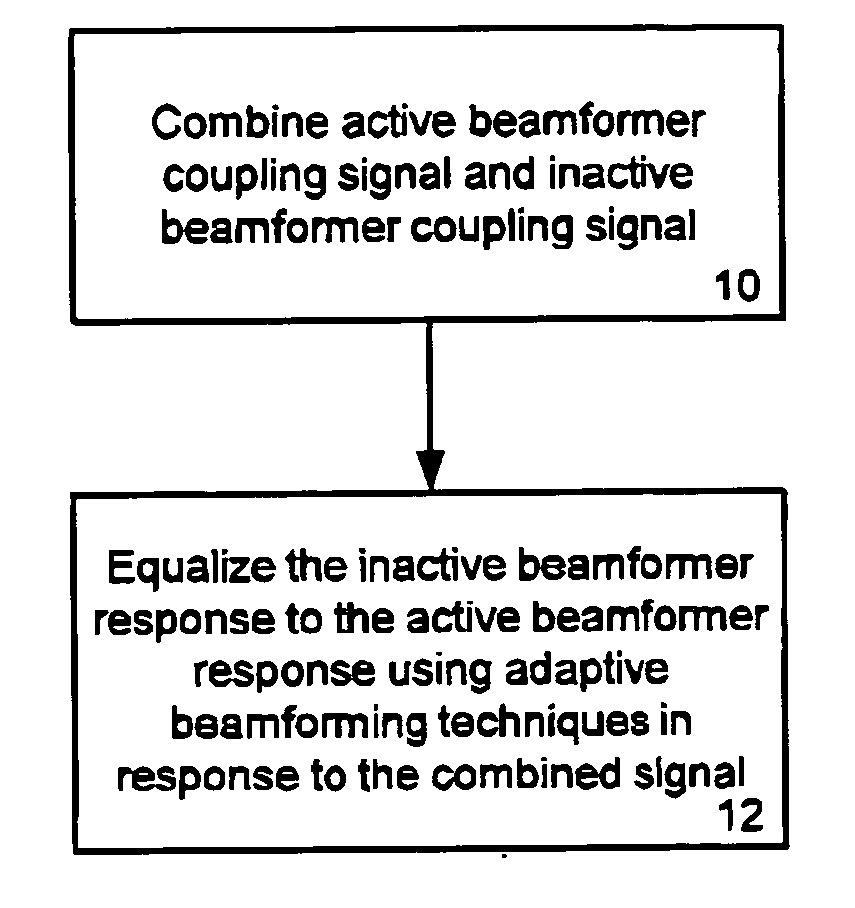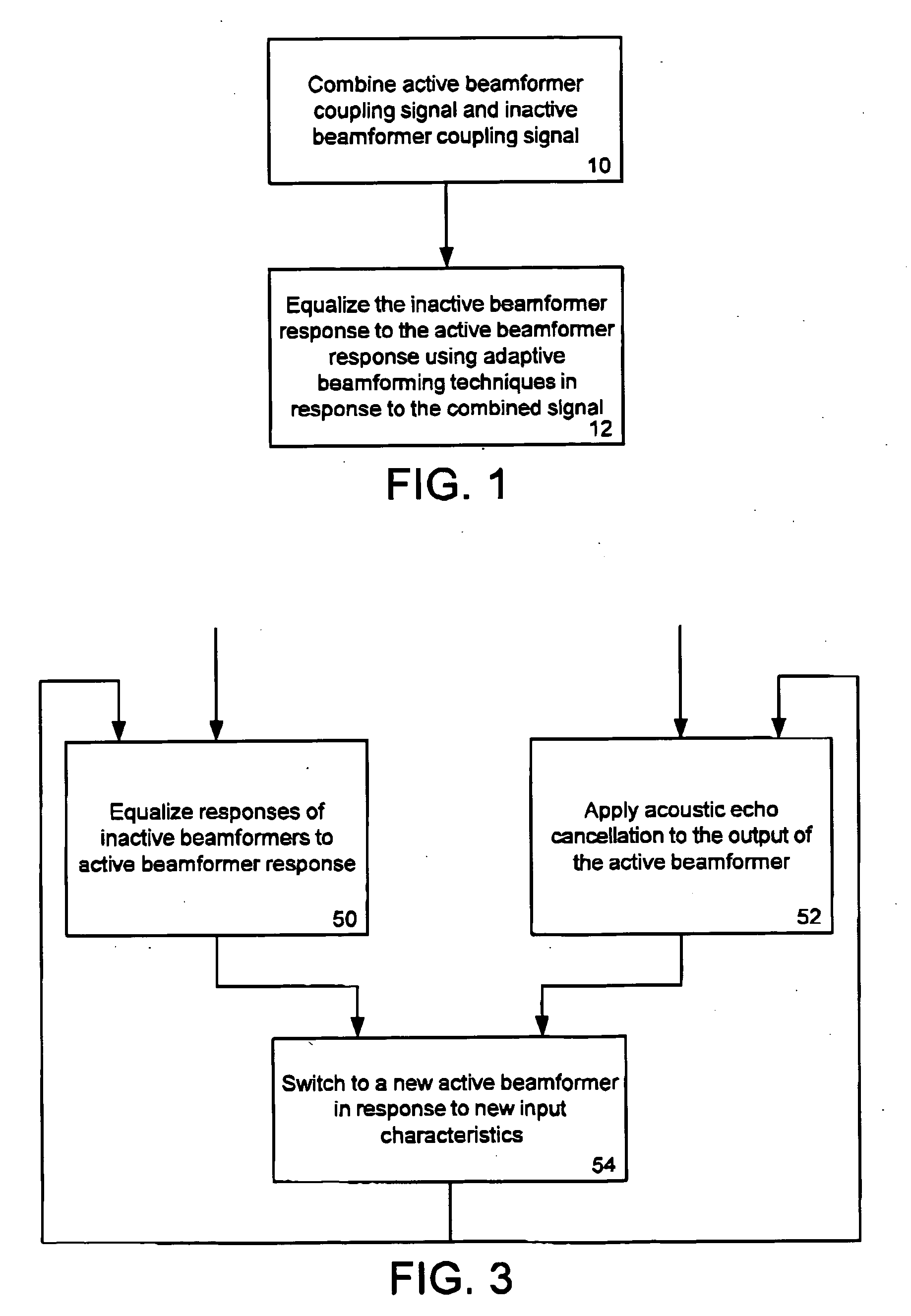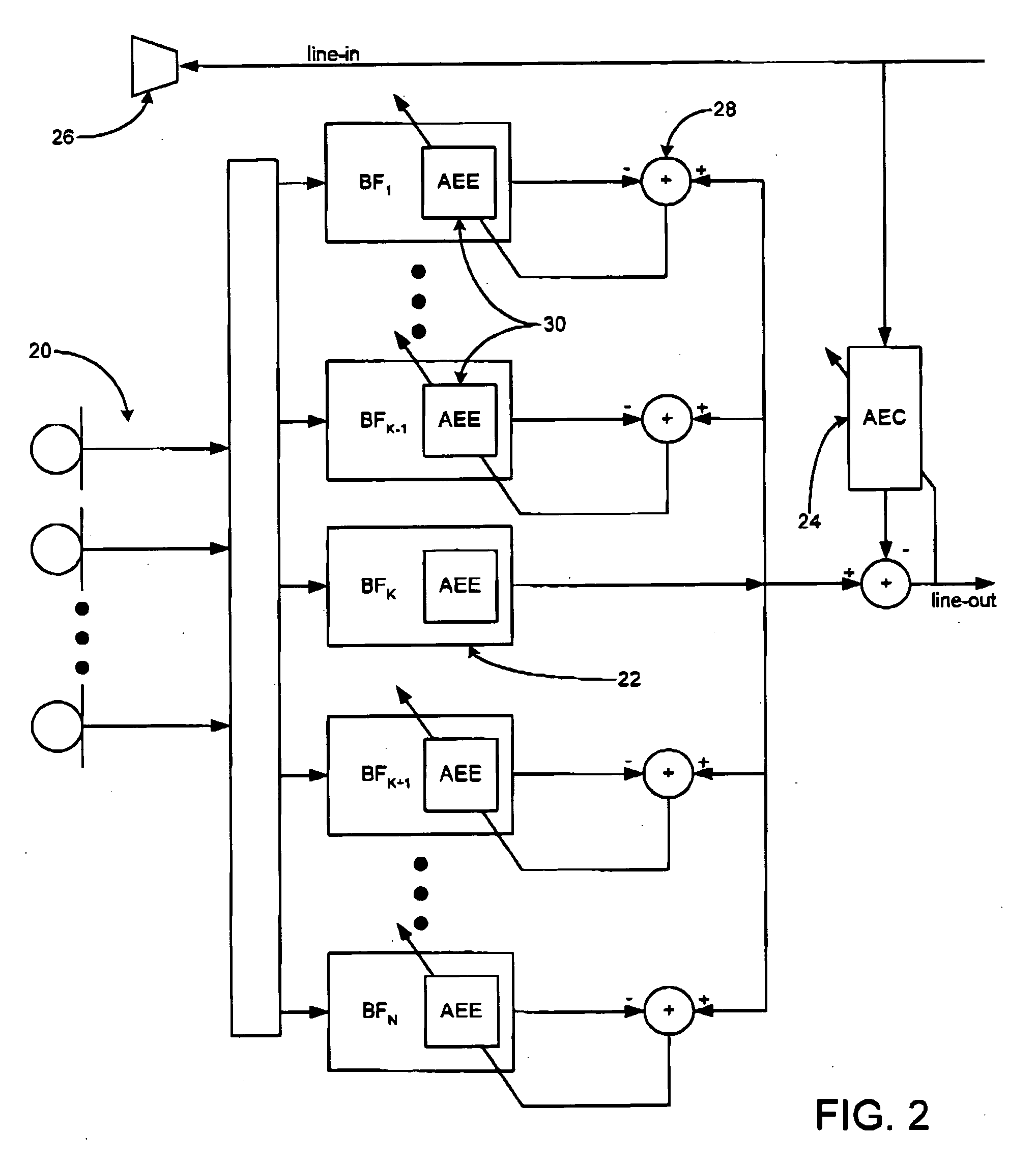Adaptive coupling equalization in beamforming-based communication systems
a beamforming and coupling equalization technology, applied in the field of audio systems, can solve the problems of prohibitive computational cost, complex adaptation beamforming system, and computational intensiveness, and achieve the effect of reducing the cost of adaptation
- Summary
- Abstract
- Description
- Claims
- Application Information
AI Technical Summary
Benefits of technology
Problems solved by technology
Method used
Image
Examples
Embodiment Construction
[0020] Generally, the present invention provides a method and system for rapid adaptive coupling equalization in beamforming-based communication systems, particularly sector-based beamforming systems, to provide smooth transitions for AEC when the look direction of the communication system changes and when the acoustic environment varies with time. The output of beamformers is modified in real-time, based on the real-time loudspeaker-coupling signal, in order to force the outputs to have the same response to the loudspeaker coupling signal. In other words, the beamformer outputs are equalized with respect to the loudspeaker coupling signal. This can be done with conventional adaptive beamforming techniques, including block-based, sample-based, time-domain, sub-band and frequency-domain adaptive filtering algorithms. These techniques are well known in the art of adaptive array processing, and are described in detail in e.g. D. G. Manolakis, V. K. Ingle, S. M. Kogon, Statistical And A...
PUM
 Login to View More
Login to View More Abstract
Description
Claims
Application Information
 Login to View More
Login to View More - R&D
- Intellectual Property
- Life Sciences
- Materials
- Tech Scout
- Unparalleled Data Quality
- Higher Quality Content
- 60% Fewer Hallucinations
Browse by: Latest US Patents, China's latest patents, Technical Efficacy Thesaurus, Application Domain, Technology Topic, Popular Technical Reports.
© 2025 PatSnap. All rights reserved.Legal|Privacy policy|Modern Slavery Act Transparency Statement|Sitemap|About US| Contact US: help@patsnap.com



